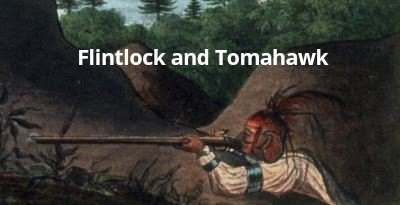'The unsung heroes of North America were the French Canadians, who were out numbered to the order of twenty to one by the English colonies and yet contrived to maintain the balance for so long through their mobility and skills with woodcraft and weapons'.
Chris Duffy Military Experience in the Age of Reason.
Canadian Militia - present in all the engagements, usually the largest component part of French forces - often misrepresented or ignored these irregulars were the prototype light infantry unit in America.
Organisation All men able to bear arms between 16 and 60 were mustered by Parish in Companies. For specific expeditions and campaigns outside the Parish volunteers or specially selected men were brigaded into groups of three to four hundred under a Colonial officer whose name the brigade normally held (eg brigade de la Corne etc). Company organisation may have existed in brigades probably by Parish with NCOs and officers a mixture of Militia and Colony troops. Colony troops and Militia often came under the description 'Canadian' troops as many of their roles and equipment were similar.
Clothing and equiment Those going on campaign were issued with clothes and equipment which would mean a certain amount of uniformity within Brigades though this is before the colour coded tuques often mistakenly attributed to this era. The appearance was typical clothing for a voyageur - a knitted cap (tuque) usually in red or blue, not long like a stocking cap of later times but more like the bonnet rouge of the French revolution or Monmouth cap. Wool leggings that sometime carried decoration coupled with beef shoes or mocassins and a long linen shirt and wool breechcloth. Knives around the neck, at the knee and at the waist (covered in a wool sash) were typical and axes and awls also were supplied as well as powder horns and musket tools. The Musket was the Tulle hunting fusil - a slender accurate weapon that was also popular among Natives though sometimes an inferior musket might be brought in place of the ones issued or so was the complaints of the officers at the time. In winter a capote - a hooded woolen overcoat was issued - closed around the waist with a sash. Burdens were carried Indian style with a tumpline and their 'tents' were simple canvas squares that were suspended from bsuhes etc.
Tactics The Milicien was the skirmisher of the F&I wars although this 'skulking' method of war was despised by regulars on both sides. 'Courageous only when behind a tree' or 'savage and hidden rascals' are typical comments from the era. Miliciens were able to load their fusils while lying down - something that caused problems when they were incorporated into regular battalions such as at the Plains of Abraham. Giving ground to create ambushes - working around the flanks - these tactics were put to good use at Canadian victories such as Monongahela. When European tactics were used such as by Dieskau at Lake George and Montcalm at Quebec it had disasterous consequences for the French and it was generally to the horror of the Canadian and Colony troops who had been fighting a different sort of war for generations to see these defeats. Often mistaken for Coureurs de bois - whose notoriety in the 1680s and 90s created a legend among Anglo Americans - these Militiamen were law-abiding colonists though their experience was completely different than their American counterparts due to a less dense population and an involvement in the fur trade.
In popular culture. They have largely been ignored in the mythology of the Eastern frontier.




No comments:
Post a Comment